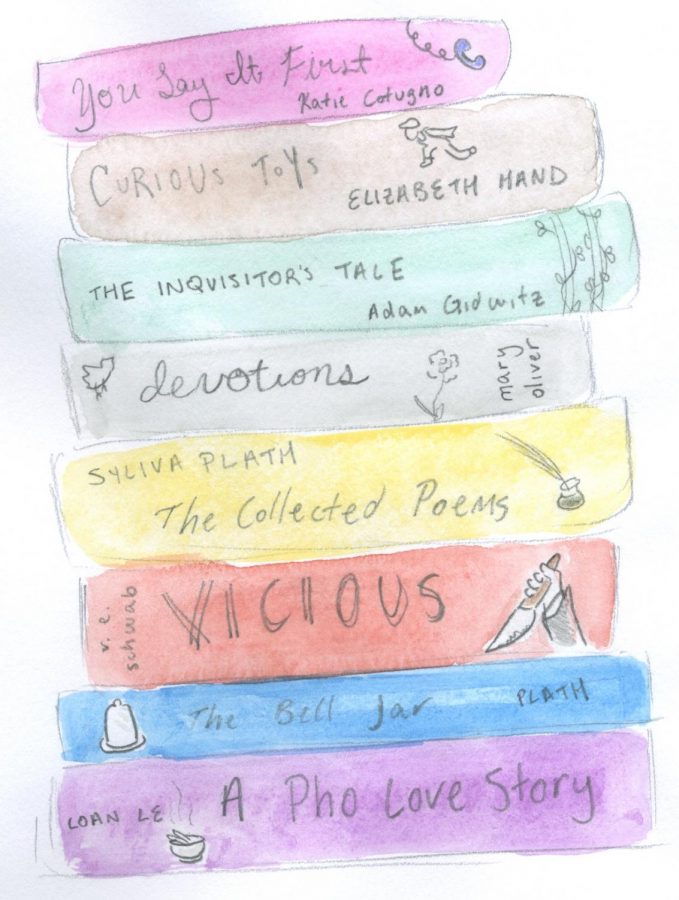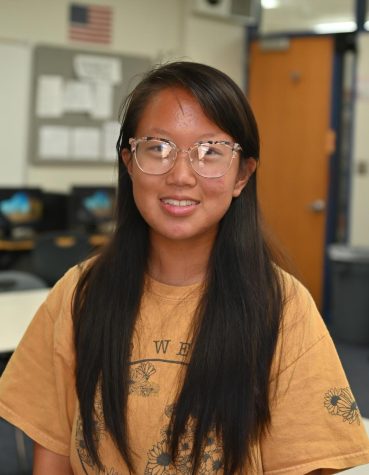Books of a Feather
Books of a genre, trope, or emotion read together
November 23, 2021
If you liked “Frankly In Love” by David Yoon, or romance with people who don’t realize they are in love, or romance with very little plot and causes a little bit of brain rot, try “You Say it First by Katie Cotugno” (2020).
Meg is a high school senior working at a voter registration call center. She calls Colby, an 18-year-old working in a less than ideal job. Colby distrusts the voting system, while Meg has complete faith. The two get off on a rocky start, but eventually begin calling each other and divulging their true selves. In a world of increasingly divided politics, this addicting love story brings some hope that people have the potential to get along.
If you liked “Dread Nation” by Justina Ireland, or slightly disturbing historical fiction, try “Curious Toys” by Elizabeth Hand (2019).
Pin is a fifteen-year-old girl in 1915 Chicago who dresses as a boy to make money. Soon, a serial killer begins to attack young girls at the amusement park Pin works at. In Pin’s quest to discover the perpetrator, Pin encounters Henry Darger, an unusual artist who works as a hospital janitor by day. Darger was a real artist, with fascinating works of art, along with thousands of pages of handwritten stories. This book blends historical fiction and suspense for a wickedly enjoyable tale.
If you liked “The Guernsey Literary and Potato Peel Pie Society” by Mary Ann Shaffer and Annie Barrows, historical fiction that focuses more on characters than history, or books that make you laugh, try “The Inquisitor’s Tale” by Adam Gidwitz (2016).
Three magical children, William, Jacob, and Jeanne, escape from various dangerous situations in the 13th century. Told in the style of manuscripts from the Middle Ages, complete with pictures, the narrator collects stories from various people who encounter the children. William is a Christian monk with powers of strength, Jacob is Jewish with the ability to heal, and Jeanne is a Christian villager who has visions of the future. The characters have the prejudices of the time, but it is realistic and well developed. In addition to the consistent historical realism, it is still fun and fast-paced. Although it is a middle school book, it is still highly enjoyable to an older audience.
If you like nature and calming verse poetry, try “Devotions: The Selected Poems of Mary Oliver” (2017).
This is a collection of Mary Oliver’s poems from the 90s to 2010s. Widely acknowledged as an excellent introduction to new readers of poetry, Oliver’s poems are soft and kind to any reader. Nature, love, and simplicity are ideas that many value, and Oliver’s poems embody. There is something wonderfully relaxing about reading these poems, and although they get progressively less developed in older works, they are still comforting.
If you like chaos and anger, try “Sylvia Plath: The Collected Poems” (1981).
Many people have heard of Sylvia Plath as a mascot for sad teenagers, but Plath has genuine talent. Although many poems difficult to understand at the beginning, during her spurt of writing in the months before her suicide, Plath rapidly improves and creates startling works of art. I found it easier to search up analyses for some of the most popular works, but as a casual reader, even I could tell which were the most powerful.
If you liked “Frankenstein” by Mary Shelley, “Ender’s Game” by Orson Scott Card, science fiction with moral grey lines, or books that absolutely destroy you, try “Vicious” by V. E. Schwab (2013).
Victor and Eli are two college students who become caught up on researching ExtraOrdinary (EO) people. They are all people who have died and come back, but with strange and uncanny powers. The two experiment on each other, until both succeed. Eli becomes obsessed with his newfound ability to heal, and adopts a savior complex, attempting to kill every EO. This book is highly compelling, with highly motivated characters who feel real.
If you liked “The Perks of Being a Wallflower” by Stephen Chobosky, coming of age stories, or stories of people who don’t know what to do with their lives, try “The Bell Jar” by Sylvia Plath (1963).
Esther is a successful young writer who is lost in the world. After winning a competition to travel to New York for the networking opportunity of a lifetime, Esther feels empty and unmotivated. Indirectly exploring Plath’s own experiences and struggles with depression, self harm, and suicide, Esther provides a nontraditional view on women’s aspirations in the 60s. I found this book interesting in the fact that I can understand why it is so compelling, although I probably will not read it again.
If you liked “Red, White, and Royal Blue” by Casey McQuiston or enemies to friends to lovers tropes, try “A Pho Love Story” by Loan Le.
This is Romeo and Juliet but make it noodle soup. Bao and Linh come from two rival families who each own their own pho restaurant. They never speak to each other, until Bao steps in to help Linh manage the restaurant on a busy night. Linh wants to be an artist, and Bao has no idea what he wants to do. As high school seniors in Vietnamese families, the pressure is mounting to choose a stable career path. I found this book delightful, but a very large personal attack on my own insecurities about the future.



